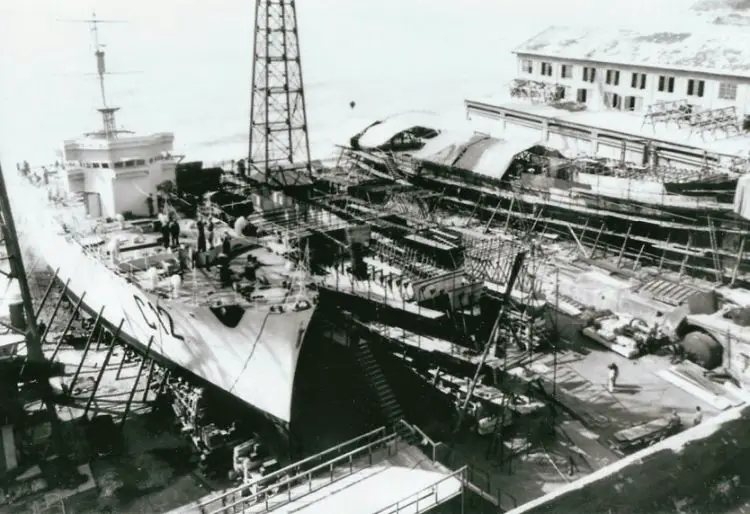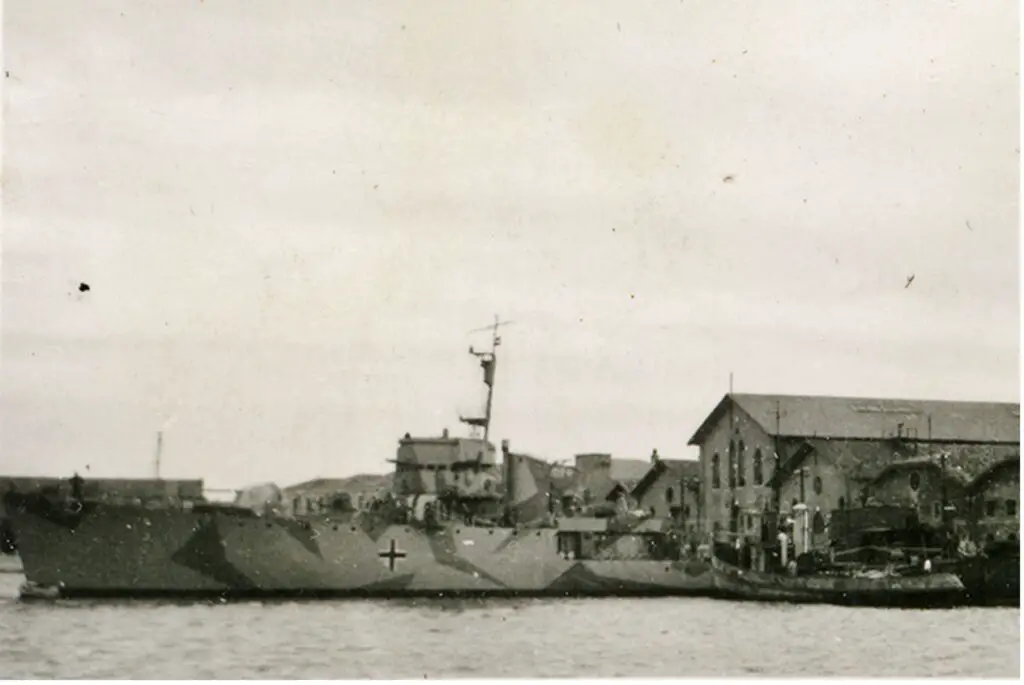Development history
The problem of protecting convoys destined for Italian overseas domains, was generally overlooked by the leadership of the Regia Marina in the interwar years. The scenario of a war against France envisaged surface engagements and hit-and-run tactics in the Western Mediterranean and in the Tyrrhenian sea. The maritime routes between Italy and its colonies were generally not considered under severe threat. With the prospect of a war against both Britain and France, the resupply of overseas territories was considered impossible.
In the meantime, little or no improvements at all were made in the field of anti-submarine warfare. The development of light vessels mainly focussed on destroyers and fast torpedo boats, which were not the optimal vessels to conduct effective convoy escorts.
The reality of war changed things, but not immediately. The year 1940 saw almost 100% of shipments safely arriving in Libya, mainly because at this stage the British had not committed yet enough forces to the anti-shipping campaign. Things changed radically in 1941 when more submarines and aircraft were based in Malta, causing an increase in ship losses on the Axis supply routes. These events lead the Italian navy to re-examine the problem seriously and to push into production new light vessels able to ease the task of destroyers and torpedo boats in convoy escort duties. The result was the Gabbiano class, 60 units were ordered and officially labelled as Anti-submarine corvettes (corvette antisommergibili).

The corvette Procellaria under construction
Specifications
The Gabbiano class corvettes displaced around 600 tons and carried a single 100mm gun placed in front of the superstructure hosting the command bridge. The AA armament consisted of three 20mm guns in single mounts placed around the 100mm gun, while the other two twin mounts were placed aft the funnel. Some of the corvettes carried two single torpedo tubes, one per side. The powerful anti-submarine armament consisted of 8 depth-charge launchers (4 per side) and two depth-charges racks placed at the stern. All the corvettes were equipped with sonar devices (Ecogoniometro). A peculiar feature of these ships was the engine apparatus. The corvettes had two diesel engines that could grant the ship a top speed of 18 knots (well sufficient for escorting merchant ships). The corvettes also had two electric engines that could be activated while hunting submarines. The electric engines made the ship less detectable by enemy submarines and could also facilitate the sonar search. Their construction was easy and standardized, so it could be easily allocated among several shipyards.

The Corvette Gabbiano
Operational history
Of the 60 ships ordered, only 28 were completed before the armistice of September 1943. Of this bucket, the first ships laid down in January 1942 were the Gabbiano, Procellaria, Cormorano, Antilope, Gazzella and Camoscio. Only three of them entered service by the end of the year while the rest entered service in 1943. Their completion lasted between 9 and 12 months, depending on the shipyard.

The Corvette Chimera
Some corvettes participated in the last efforts aimed at resupplying Libya while more fought on the “death route” to Tunisia. A few units were lost during the period Nov 1942 – Sept 1943, in which the corvettes completed 278 antisubmarine missions, 174 escort missions, 6 transport, and 137 of another nature. Notably, they managed to sink three (confirmed) British submarines, HMS Thunderbolt, HMS Sahib and HMS Saracen.
Some corvettes were lost in the events following the armistice, while others were captured by the Germans in the shipyards still unfinished. After the armistice, 19 units joined the bulk of the Regia Marina and began their operational activity alongside the Allies.

The Corvette UJ 225 (formerly Colubrina) Under German Control (Marco Ghiglino’s archive)
During the “co-belligerent period” up until May 1945, the surviving corvettes completed 11 war patrols, 31 antisubmarine missions, 133 antisubmarine patrols, 32 transport missions, 1,508 escorts, 45 miscellaneous and 340 training missions. After 1946, the corvettes entered service in the new Italian Navy (Marina Militare Italiana), and transformed into minesweepers. In the following years, three of the unfinished units entered service, thus increasing their number to 22. These reliable and well-designed ships ended up serving until the early 1970s.
Sources
Giorgernini, G. (2001). La Guerra Italiana sul mare, La marina tra vittoria e sconfitta 1940-1943.
Greentree, D. (2016). British submarines vs Italian torpedo boats. Osprey publishing.
Nastasi, S. (s.d.). Le corvette della classe Gabbiano. Tratto da Trento in Cina: http://www.trentoincina.it/mostrapost.php?id=312
Romano, S. (s.d.). Corvettes. Tratto da RegiaMarina.net: http://www.regiamarina.net/detail_text_with_list.asp?nid=76&lid=1&cid=1